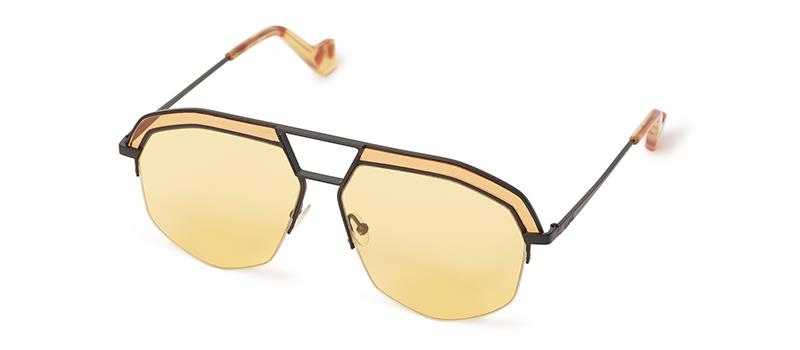Licensed eyewear has been big business for decades, so it should come as no surprise that some of the owners of brands have looked to have a bigger piece of the pie. The only surprise should be how long it took them.
Eyewear brand licensing clearly offers significant rewards but in recent years the risks have become more evident. In 2014 when fashion house Kering made the decision not to renew its Gucci distribution agreement with Safilo, the industry was rocked. Despite an agreement for Safilo to continue manufacturing Gucci eyewear, the effects continue to be felt by the Italian producer.
When Moet Hennessy Louis Vuitton SE (LVMH) decided last year to enter the eyewear market for itself, Safilo was once again the loser, with successful licences like Celine being terminated and the fate of other premium names like Christian Dior yet to be decided. There was a different winner, though.
LVMH has taken a different approach to Kering with a joint venture alongside Marcolin to create Thélios. At present, four LVMH brands fall under the Thélios umbrella: Celine, Loewe, and from January 2019, Kenzo and Fred.
Company CEO Giovanni Zoppas (formerly CEO of Marcolin), is the person tasked with leading Thélios during its infancy. While Zoppas admits there has been some misunderstanding in the market over the differences between Thélios and Marcolin, he is clear that the new company has a defined objective. ‘It’s (Thélios) a way of reacting to what’s changing in the market. I believe that the strategic reason, not only for Thélios but for Marcolin and key players in the market, is that everybody has recognised that mid-term, there is not room for everybody in this segment. In three, four or five years’ time, some of the other eyewear companies won’t be around.’
There is also difference in the product offering. Celine, Loewe, Fred are in the upper echelons of the luxury fashion stratosphere, while Kenzo is nipping at their heels. The Thélios portfolio is well defined. ‘On the other side, you’ve got Marcolin,’ says Zoppas. ‘With historical background as a player in the market and the idea of being “360 degrees company” with brands from Skechers to Tom Ford.’

Loewe sunglasses
To ensure that these luxury brands have eyewear that befits their DNA, Thélios has invested heavily in its own factory in Longarone. ‘It’s truly state of the art, but a real mix of craftsmanship and the latest machinery. You have people creating products by hand and then 3D printing machines making complex structures. It shows who we are and what we want to achieve in the future.’ The new factory sets Thelios apart from other similar companies, says Zoppas. ‘It’s easy to understand the difference in our approach, because we control our manufacturing.’
The relationship between LVMH and Marcolin brings French and Italian working cultures together, but far from being any clash, Zoppas says the two parts of Thelios have found harmony very quickly. ‘In Thelios, France and Italy are combining the best of their eyewear expertise. In just eight months, we were able to set up a cutting-edge factory, not just in terms of manufacturing technology, but architecturally too. It’s really the sort of landmark that will make a stamp in the industrial area of Longarone.’
Since the company was created in April this year, the number of employees around the world has risen to 300. Fifty are based outside of Italy, with 30 being based in France at LVMH headquarters in Paris working in product development, design and marketing. Zoppas says the split of men and women across the company is 50/50 and just below that in top manager positions.
There has also been a concerted effort to bring down the average age of the workforce at Thelios. The average age of employees in the company is now 30, but in the Longarone factory, the average age is just 25. Zoppas explains the reasons behind the move: ‘There is a lot of competition in the area to hire people with good expertise in eyewear manufacturing, so we decided to invest in some key people to take on the role of teachers and then invested in young people to be trainees. The reasoning was young people have fresh minds and considering that we are using some approaches that are different from the traditional eyewear industry, so we have sort of a “blank canvas” to work from.’
